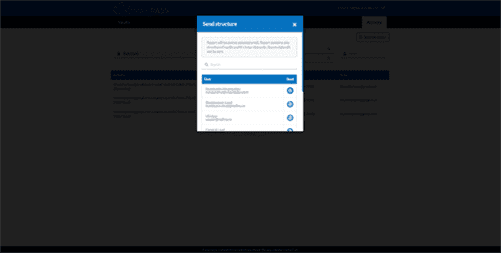By understanding the five stages of group development, you can support your team as they’re getting to know one another to quickly enable collaboration and effective teamwork. Track objectives as part of your meeting workflow with our Objectives tool. Clearly record, define, track, and review the progress of your objectives during team meetings. In the third stage of team development, try Fellow’s Feedback feature to deliver valuable positive and constructive feedback that empowers individuals to complete new tasks.

During the storming stage, have employees take personality tests that recognize skills and identify shortcomings. Personality tests are one way that leaders can recognize employee motivations to build cohesive teams and improve corporate culture. By identifying personality differences early on, leaders can confront conflict proactively and with ease.
Strategic Project Management: Theory and Practice for Human Resource Professionals
This is a concept that psychologist Bruce Tuckman came up with to properly understand the progress of various teams and the development of key contributors. Team members are able to prevent or solve problems in the team’s process or in the team’s progress. A “can do” attitude is visible as are offers to assist one another. Roles on the team may have become more fluid, with members taking on various roles and responsibilities as needed. Differences among members are appreciated and used to enhance the team’s performance. As a result of these studies, a fifth stage, “adjourning,” was added to the hypothesis (Tuckman & Jensen, 2010).
Often, teams will redefine their goals or team structure that were established in the Forming stage. As a result, there is increased morale on the team, and members have a more clear understanding of what they are trying to accomplish. In this stage, the team shares a vision and more open communication. The first stage of team development consists of the team coming together, or forming. During this stage, members focus mainly on how they fit into the group, as they try to gain acceptance within the team. Because of this, there might be a lot of individual insecurity at the beginning.
How to help a group of new hires become a high-performing team sooner
Here you’ll find a variety of articles on subjects such as business, ministry, archaeology, communication, psychology, education and many more. When you start to sense that the left hand knows what the right hand is doing, you’ve made it into the “norming” stage. The challenge now is to move a bit faster while keeping the quality of your work high. We collaborate with clients to understand their unique needs, and only then do we design and facilitate sessions utilizing our
four key areas of expertise.

They behave nicely, comply with instructions, and treat each other like strangers. To help the team gel, the managers need to encourage collaboration and cooperation between team members and ensure everyone gets a chance to work with each of their colleagues to build relationships. In agile software development, high-performance teams will exhibit a swarm behavior as they come together, collaborate, and focus on solving a single problem. Swarming is a sometime behavior, in contrast to mob programming, which can be thought of as swarming all the time. Every team moves through the four stages of development, and may slip back a stage or two as new challenges or opportunities arise. Being resilient, laying aside ego and working together will allow the team to meet the challenges and emerge stronger than when they started.
What Are the Seven Basic Tools of Six Sigma?
This is the ideal stage to set great team habits and deliver meaningful feedback so that everyone feels prepared to maximize their efficiency in stage four. If teams get through the storming stage, conflict is resolved and some degree of unity emerges. In the norming stage, consensus develops around who the leader or leaders are, and individual member’s roles.
The principles are based on the same principles Five Star hotels and restaurants use to achieve high-quality service. If your firm focuses on the 7 areas, you will begin to see a cultural shift happen and your firm’s level of client service will rise. Furthermore, team members may encounter unexpected difficulties, feel lost and overwhelmed, and disillusioned and disappointed with their new team. Managers need to support each team member and ensure they can contribute and their peers are not blocking them. Frequent 1–1s allow managers to help their team members cope with issues and find a place in the team. After all, their ability to overcome obstacles and achieve their goals is a reflection of a management job well done.
Overview of the model
Many long-standing teams go through these cycles many times as they react to changing circumstances. For example, a change in leadership may cause the team to revert to storming as the new people challenge the existing norms and dynamics of the team. Behaviors during the Storming stage may be less polite than during the Forming stage, with frustration or disagreements about goals, expectations, roles and responsibilities being openly expressed. During the Storming stage, team members may argue or become critical of the team’s original mission or goals. In the performing stage, consensus and cooperation have been well-established and the team is mature, organized, and well-functioning. There is a clear and stable structure, and members are committed to the team’s mission.
- During the Norming stage, the leader should continue to encourage members to share their opinions, even if they disagree.
- However, in the late 1970s, he included a fifth stage which is adjourning.
- The team achieves better cohesion as people find ways to work together, despite their differences.
- Better yet, use a collaborative meeting tool like Fellow to build a healthy team culture and organize your biggest ideas into actionable steps.
- In the 1970s, Tuckman worked with fellow psychologist Mary Ann Jensen to add a fifth phase called adjourning.
There may be regret as the team ends, so a ceremonial acknowledgement of the work and success of the team can be helpful. If the team is a standing committee with ongoing responsibility, members may be replaced by new people and the team can go back to a forming or storming stage and repeat the development process. One important element for teams is task interdependence which is the extent to which team members must share materials, information, or expertise to perform their jobs (McShane et al., 2018, p. 222). According to the Cambridge, Dictionary feeling as a noun is a fact of feeling something physically (Cambridge, n.d.).
How to help your team through the stages of team development
The principal work for the team during the Forming stage is to create a team with clear structure, goals, direction and roles so that members begin to build trust. During the Forming stage, much of the team’s energy is focused on defining the team so task accomplishment may be relatively low. During the Forming stage of team development, team members are usually excited to be part of the team and eager about the work ahead. Members often have high positive expectations for the team experience. At the same time, they may also feel some anxiety, wondering how they will fit in to the team and if their performance will measure up. Each stage of team development has its own recognizable feelings and behaviors; understanding why things are happening in certain ways on your team can be an important part of the self-evaluation process.

A strong team leader is the backbone of every high-performing team. Without strong leadership, teams may struggle reaching the performing stage. By developing your own leadership skills, you can model collaboration best practices and help your team reach their fullest potential. In the earlier stages of your team’s formation, establish https://www.globalcloudteam.com/ a clear communication plan. A communication plan is an outline of how your team is going to communicate important information to key stakeholders. Clarity on the various avenues of communication allows team members to effectively get work done, understand their roles, and know where to find the information they need about work.
Norming and re-norming
At this stage, leaders should aim to refocus the team’s long-term vision, break down goals into smaller action items, and help employees work through any disappointment they’re experiencing. In the adjourning stage, most of the 4 stages of team formation team’s goals have been accomplished. The emphasis is on wrapping up final tasks and documenting the effort and results. As the work load is diminished, individual members may be reassigned to other teams, and the team disbands.
